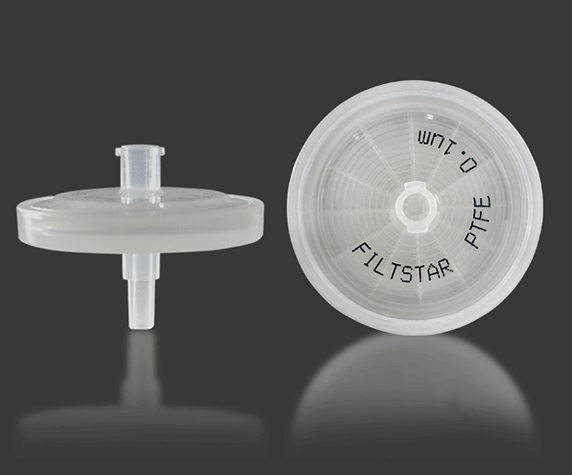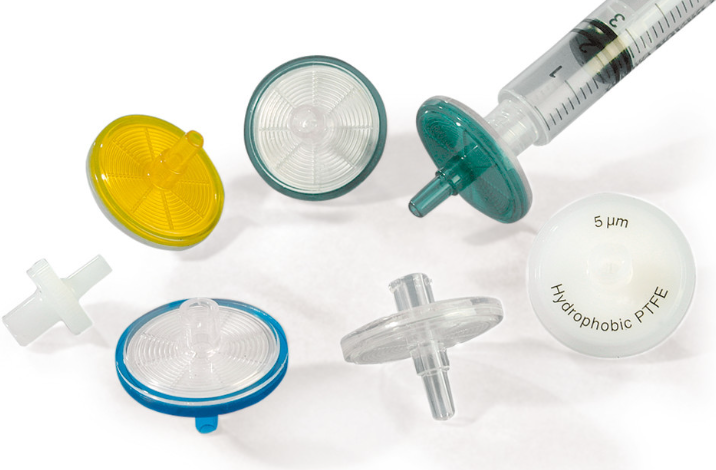The progress of technology has made life easier. It can be said with certainty that even minor changes to the way a tool is used will help save a lot of time and effort, which can be effectively used elsewhere.
Syringe filters may be the case, not only making them increasingly popular in application, but also improving the process of removing pollutants from various liquids used in the biotechnology industry.

What is PES syringe filter?
A PES (Polyethersulfone) syringe filter is a laboratory filtration device designed for the removal of particulate matter and contaminants from liquids. It is a valuable tool in various scientific and analytical applications where the purification and clarification of samples are necessary. The PES filter membrane material has a very low protein adsorption rate, which can ensure the stability of the components of the filtered drug solution, and is suitable for disposable precision filtration infusion sets and anesthesia drug solution filters. PES is often used in the manufacture of hemodialyzers, blood concentrators, artificial lungs, etc. due to its excellent mechanical properties, stable wetting strength, and blood compatibility.
What is PVDF syringe filter?
A PVDF (Polyvinylidene fluoride) syringe filter is a laboratory filtration device used for the removal of particulates, contaminants, and impurities from liquid samples. PVDF is a hydrophobic thermoplastic polymer known for its chemical resistance and low protein binding properties, making PVDF syringe filters particularly well suited for certain analytical and research applications. The PVDF membrane is hydrophobic, and the pore size of the membrane can be large or small. As the pore size of the membrane continues to decrease, the membrane is more firmly bound to low molecular weight proteins.
Differences between them:
Material Composition:
PES: PES is a thermoplastic polymer known for its high flow rate and low protein binding characteristics. It is hydrophilic, which means it has an affinity for water.
PVDF: PVDF is also a thermoplastic polymer, but it is hydrophobic by nature. It repels water and has a lower protein binding capacity compared to PES.
Compatibility:
PES: PES syringe filters are suitable for filtering aqueous solutions, as they are hydrophilic and do not require pre wetting.
PVDF: PVDF syringe filters are preferred for filtering organic solvents, aggressive chemicals, and non aqueous solutions due to their hydrophobic nature. They may require pre wetting with a compatible solvent.
Protein Binding:
PES: PES syringe filters have a low protein binding capacity, making them suitable for biological and proteinaceous samples.
PVDF: PVDF syringe filters have even lower protein binding capacity, making them an excellent choice for protein filtration and sample preparation for mass spectrometry.
Chemical Compatibility:
PES: PES is generally compatible with a wide range of chemicals and solvents, but it may not be suitable for extremely aggressive chemicals.
PVDF: PVDF is known for its chemical resistance and can handle a broader range of solvents and chemicals, including strong acids and bases.

Applications:
PES: PES syringe filters are commonly used in applications such as HPLC sample preparation, microbiological filtration, and filtration of aqueous samples. For general alkali, aliphatic hydrocarbons, oils, and alcohols, the PES filter membrane’s performance is stable, and suitable for physical and chemical sterilization, such as high pressure steam, gamma radiation, and ethylene oxide sterilization, with high bubble point and excellent membrane integrity.
PVDF: PVDF syringe filters are often used for protein analysis, cell culture media filtration, and filtration of organic solvents. Hydrophobic polyvinylidene fluoride membrane is mainly used in gas and vapor filtration, and high temperature liquid filtration; hydrophilic polyvinylidene fluoride membrane is mainly used in tissue culture medium, additives, and other sterilization filtration solvents, and purification filtration of chemical raw materials, aseptic processing of reagents, filtration of high temperature liquids, etc.
In summary, PVDF membranes are preferred for applications requiring excellent chemical resistance and low protein binding, such as protein analysis and filtration of aggressive solvents. On the other hand, PES membranes are chosen for applications demanding high flow rates, low protein binding, and compatibility with aqueous solutions, such as sterile filtration and general laboratory filtration.
Protein samples or liquids require the use of low protein binding filters, such as polyvinylidene fluoride (PVDF) or polyethersulfone (PES) membranes. They are essentially hydrophilic and are therefore considered suitable for use in ion chromatography. When purifying non polar solvents, a hydrophobic membrane is required. In this case, polytetrafluoroethylene (PTFE) syringe filters may be the ideal choice. This is a chemically resistant polymer, making it easy to remove pollutants from highly corrosive solvents.
When purifying solvents that require strict purification processes, glass fiber filters may also be required. These syringe filters are used for tissue culture and removal of large pollutants, making it easy to remove sticky substances. These types of filters have another more common use they are used to identify the presence of smoke in the air and monitor air pollution.
PES syringe filters, especially certified ion chromatography and tissue culture filtration, as well as pollutant purification as described above. There are various other types of syringe filters, each of which is distinguished based on the type of membrane, making them more suitable for specific types of fluids or liquids. Needle type filters have various pore sizes and can have membranes made of hydrophilic or hydrophobic materials. The commonly used membrane types in syringe filters are polypropylene, nylon, mixed cellulose, PTFE, and PES. The type of filter membrane you will need depends on the properties of the solvent or substance you want to purify.
Most water based substances can be filtered using hydrophilic nylon membrane filters. Then comes the mixed cellulose ester membrane filter, which is considered an ideal choice for filtering sensitive biological solvents and solutions.
Yongkang medical uses high quality materials to produce filters that are resistant to chemicals and can withstand a wide range of temperatures. Just contact us for PES syringe filter!